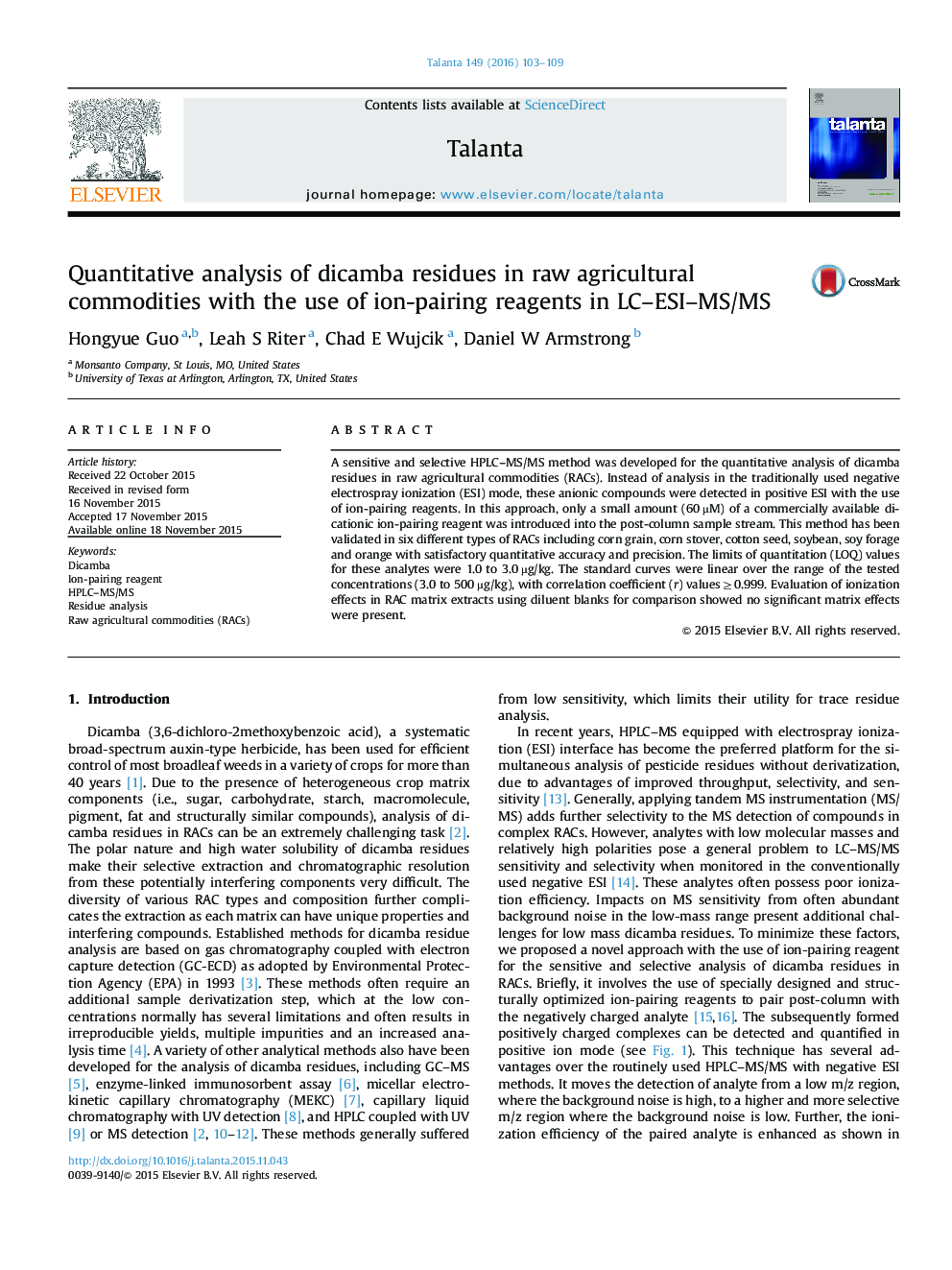| Article ID | Journal | Published Year | Pages | File Type |
|---|---|---|---|---|
| 1241811 | Talanta | 2016 | 7 Pages |
•Analysis of acidic dicamba residues in positive ion mode instead of negative ion mode.•Small amount of commercially available ion-pairing reagent (μM level) was used.•The method can be applied in six different types of raw agricultural commodities.•No significant matrix effects were present with the developed method.
A sensitive and selective HPLC–MS/MS method was developed for the quantitative analysis of dicamba residues in raw agricultural commodities (RACs). Instead of analysis in the traditionally used negative electrospray ionization (ESI) mode, these anionic compounds were detected in positive ESI with the use of ion-pairing reagents. In this approach, only a small amount (60 µM) of a commercially available dicationic ion-pairing reagent was introduced into the post-column sample stream. This method has been validated in six different types of RACs including corn grain, corn stover, cotton seed, soybean, soy forage and orange with satisfactory quantitative accuracy and precision. The limits of quantitation (LOQ) values for these analytes were 1.0 to 3.0 µg/kg. The standard curves were linear over the range of the tested concentrations (3.0 to 500 µg/kg), with correlation coefficient (r) values≥0.999. Evaluation of ionization effects in RAC matrix extracts using diluent blanks for comparison showed no significant matrix effects were present.
Graphical abstractFigure optionsDownload full-size imageDownload as PowerPoint slide
